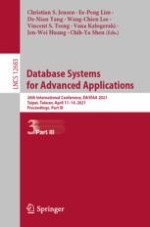The three-volume set LNCS 12681-12683 constitutes the proceedings of the 26th International Conference on Database Systems for Advanced Applications, DASFAA 2021, held in Taipei, Taiwan, in April 2021.
The total of 156 papers presented in this three-volume set was carefully reviewed and selected from 490 submissions.
The topic areas for the selected papers include information retrieval, search and recommendation techniques; RDF, knowledge graphs, semantic web, and knowledge management; and spatial, temporal, sequence, and streaming data management, while the dominant keywords are network, recommendation, graph, learning, and model. These topic areas and keywords shed the light on the direction where the research in DASFAA is moving towards.
Due to the Corona pandemic this event was held virtually.
